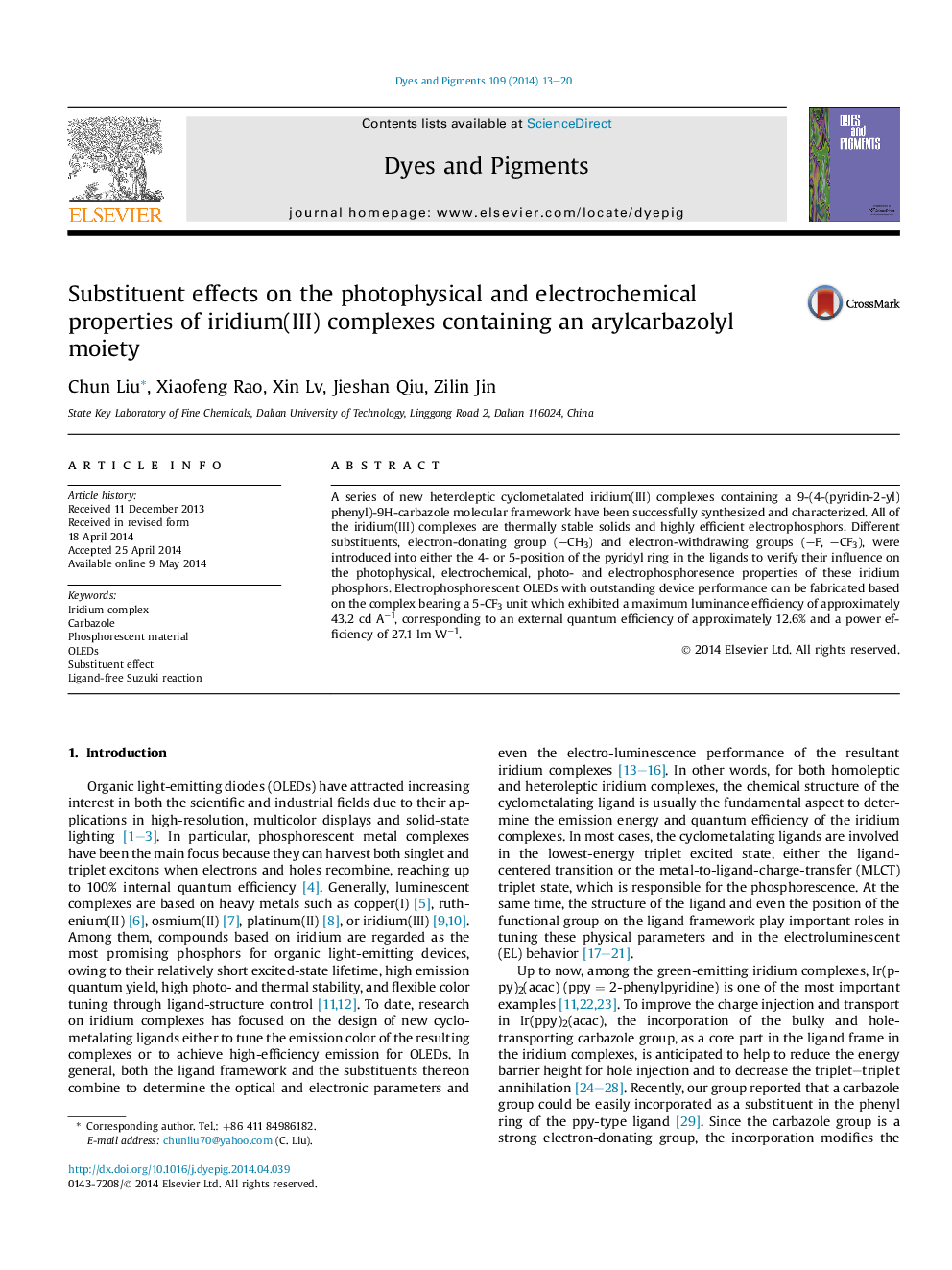| کد مقاله | کد نشریه | سال انتشار | مقاله انگلیسی | نسخه تمام متن |
|---|---|---|---|---|
| 176041 | 458931 | 2014 | 8 صفحه PDF | دانلود رایگان |

• The carbazole-based cyclometalating ligands were prepared via a palladium-catalyzed ligand-free, aerobic Suzuki reaction.
• This work presents the substituent effects on the luminescent properties of (ppy-carbazole)2Ir(acac) derivatives.
• The complex with a –CF3 group at the 5-position exhibits an excellent green–yellow phosphorescence.
A series of new heteroleptic cyclometalated iridium(III) complexes containing a 9-(4-(pyridin-2-yl)phenyl)-9H-carbazole molecular framework have been successfully synthesized and characterized. All of the iridium(III) complexes are thermally stable solids and highly efficient electrophosphors. Different substituents, electron-donating group (–CH3) and electron-withdrawing groups (–F, –CF3), were introduced into either the 4- or 5-position of the pyridyl ring in the ligands to verify their influence on the photophysical, electrochemical, photo- and electrophosphoresence properties of these iridium phosphors. Electrophosphorescent OLEDs with outstanding device performance can be fabricated based on the complex bearing a 5-CF3 unit which exhibited a maximum luminance efficiency of approximately 43.2 cd A−1, corresponding to an external quantum efficiency of approximately 12.6% and a power efficiency of 27.1 lm W−1.
The properties of a series of (ppy-carbazole)2Ir(acac) derivatives are reported. The introduction of a –CF3 group on the pyridyl ring of the ligand resulted in a great bathochromic shift of the emission color of the iridium complex, which is an excellent green–yellow phosphorescent material with a maximum luminance efficiency of 43.2 cd A−1 and a power efficiency of 27.1 lm W−1.Figure optionsDownload as PowerPoint slide
Journal: Dyes and Pigments - Volume 109, October 2014, Pages 13–20